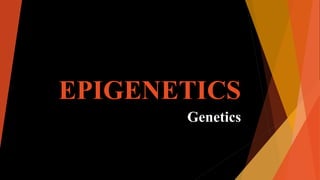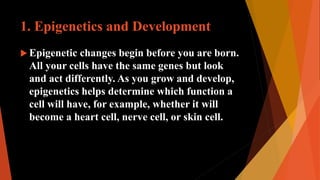Epigenetics is the study of how environmental factors and behaviors can cause changes in gene expression without altering the underlying DNA sequence. These epigenetic changes can be caused by DNA methylation, histone modification, and non-coding RNAs, and can turn genes on and off. Epigenetics helps regulate cell differentiation and is also influenced by age, behaviors like smoking, and the in utero environment. Epigenetic changes play a role in health by influencing immune function, cancer risk, and fetal development.





















